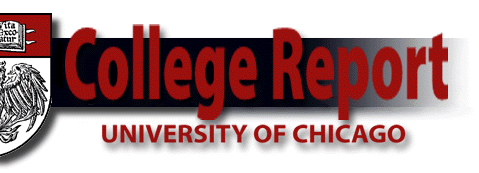|

Students
leave imprint on Smart Museum exhibit
This November,
an exhibit showcasing the talent of six students will open at the
David and Alfred Smart Museum of Art. But the students’ talent won’t
be evident in the artwork. Rather, their insight will be revealed
in the selection and placement of the show’s more than 20 photographs,
installations, and other works representing 11 international artists’
takes on portraiture. Titled Space/Sight/Self, the show will
run from November 19 through January 10 and will include recent
works by Dawoud Bey, Byron Kim, Jurgen Mayer Hermann, Alice Hargrave,
and Holly Rittenhouse, as well as several photographs and prints
from the 1970s by feminist artists Francesca Woodman and Ana Mendieta.
The exhibit
is part of the Smart’s efforts to encourage collaborations among
the museum, students, and faculty. Earlier this year, the Smart
received a $178,000 grant from the Andrew W. Mellon Foundation to
support such projects. The museum has already planned exhibits for
1999 and 2000 that involve students enrolled in art history seminars
on antiquarianism and on monastic devotional practices.
The Space/Sight/Self
exhibit represents the culmination of an interdisciplinary course
in art, art history, and gender studies taught last winter quarter
by Laura Letinsky, an assistant professor in the Committee for the
Visual Arts and at Midway Studios. Called Space/Sight/Self: A Curatorial
Project, the class included five undergraduates—and no studio art
majors. While Letinsky came up with the idea for the class and chose
the show’s overall theme, the students honed its focus and tone
through their assignments, discussions, and trips to city galleries.
“It’s important
for students to have experience working with real contemporary art
rather than slides or reproductions,” says Letinsky, who will be
a visiting artist at Yale this spring while on leave from the U
of C. “There’s a notion that art is outside contemporary intellectual
culture, but they saw that it is actually engaged with it.”
The quarter
began with the students reading interpretations of identity by such
20th-century thinkers as Sigmund Freud and Harold Bloom. They then
dealt with questions of their own identity, analyzing the effects
of gender, race, class, and sexual orientation on self-recognition
and on understanding others. They studied how contemporary artists
use portraiture to convey their struggles with these issues, just
as keenly as a writer using words.
“I wanted to
establish that there is a relationship between identity and portraiture,”
says Letinsky. “I wanted them to be aware of how the work is seen
and its context, to see that the work is not mute and that it is
a text to be read.”
In developing
the show, the students researched possible exhibitors, writing essays
on how the work of certain artists relates to the theme of identity.
They then contributed research on the selected artists to the exhibition
catalog and met through the spring and summer to decide how to present
the artwork. The resulting multimedia show, says Letinsky, includes
works that respond to the influence of photography on art and self-awareness.
“The works
all give the audience another way of thinking about the problem
of identity,” she explains. “They all investigate identity as a
question rather than an answer. They challenge the viewer. The fragmentation
in their work doesn’t allow for a warm, fuzzy feeling.”
For example,
she says, artist Byron Kim’s Lisa Sigal/Byron Kim places
a panel painted in the skin color of his wife next to a panel painted
in his own. Kim is prodding viewers to ask, says Letinsky, “What
exactly gets told about a person when they are reduced to just a
skin color?”
Similarly,
points out student curator Liv A. Gjestvang, AB’98, artist Dawoud
Bey creates actual physical fractures in his photographic portraits.
“Instead of capturing a single moment in the photograph,” she explains,
“he takes several images over a period of time and overlaps them
so that each part of the picture is a little different, and the
subtle changes in his subject over time are actually visible in
the image.”
Gjestvang,
an English concentrator, found that “curatorial work is practical
and does involve calling galleries, finding artwork, writing articles,
and designing the physical space, but it is also an intensely critical
and theoretical process.”
Notes fellow
student curator Catherine Cooper, ’99, an art history major: “I
hope that other students will realize that the whole project is
about how a group of people in a classroom can discover and learn
together and then present that process to the public. I just hope
it makes them think.”—C.S.
|

